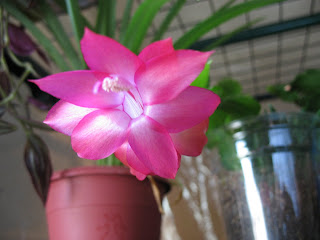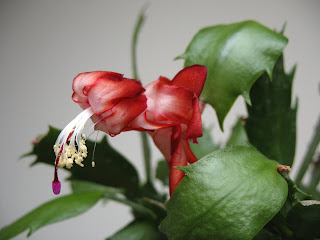 During each weekend for the past month or so I have been making dehydrated apple ring chips so that we can enjoy the wonderful fall apples throughout the winter. It is fairly simple to make your own and in this post I will document the method which I have developed.
During each weekend for the past month or so I have been making dehydrated apple ring chips so that we can enjoy the wonderful fall apples throughout the winter. It is fairly simple to make your own and in this post I will document the method which I have developed.

Firstly, you will need the following items (as shown above):
- Paring knife
- Cutting Board
- Mandoline Slicer
- 1 Plate
- Apples
- Dehydrator

The first step, after washing the apples, is to cut the core out of the apple with a paring knife. I usually try to cut square on both the top and bottom of the apple so that I can just use my thumb to push the core out of the apple and into the garbage. This usually works pretty well as long as I get a clean cut on both the top and bottom of the apple. For this batch of apple chips I used one
Honeycrisp apple, which I had purchased at a local Orchard, and then some cheaper and less tasty apples from the grocery store, the specific type I am not sure of. The Honeycrisp apples seem to make the best apple chips since they are full of sweetness and incredible apple flavor.

The next step in the process is to slice the apples into rings. I use an
Oxo Good Grips Mandoline Slicer
and it works very well. I would recommend buying one if you don't already have one because not only can you use the slicer to make apple chips, but also potato chips and fancy sliced fruits and vegetables for all of your meals! Anyway, as you can see in the picture above, the apples will slice best if they are perfectly round, but the apple I used before taking the picture was not perfect and therefore resulted in some apple rings which were not perfect.

The dehydrator, which I am borrowing from my parents, is an
Nesco American Harvest FD-61 Snackmaster Encore Dehydrator and Jerky Maker
which has also worked very well. As the name suggests, it's not only for making your own fruit snacks but your own jerky as well. If you buy one of these you'll find yourself making wonderfully tasty and nutritious snacks of your own!

Once you have sliced all of the apples you can place them on the racks of the dehydrator, making sure that none of them are overlapping since this will result in them not drying correctly. Some instructions suggest that you apply lemon juice, ascorbic acid, or other things to prevent discoloration by oxidation, but I haven't used any of those yet and I have not had any problems with the apple chips. Additionally, I enjoy the natural apple flavor and I am unsure I would want any other flavors added to the apple chips.

The dehydrator has seven different settings ranging from 95 degrees Fahrenheit to 155 degrees Fahrenheit. The instruction book that is included with the dehydrator specifies which temperature to use depending on what you are drying. For apples you need to dry them at 145 degrees for about six to eight hours. You can check intermittently to see how the drying process is progressing, but try to leave the lid on so that too much heat is not lost from the unit.
You can tell that the apple chips are ready when you take the chips out and they are crisp and brittle. Sometimes you will need to take the chips out and let them cool before you are able to determine if they are ready or not. See the images below to see how ours looked when they were done.




For storage, I usually just use a quart size ziplock bag and set them on the counter. This allows for easy access when your apple chip craving strikes!



 Every couple of days I spray more water, blow air into the bag, and reseal it. So far this has been working well and the cuttings appear to be growing.
Every couple of days I spray more water, blow air into the bag, and reseal it. So far this has been working well and the cuttings appear to be growing.





















































